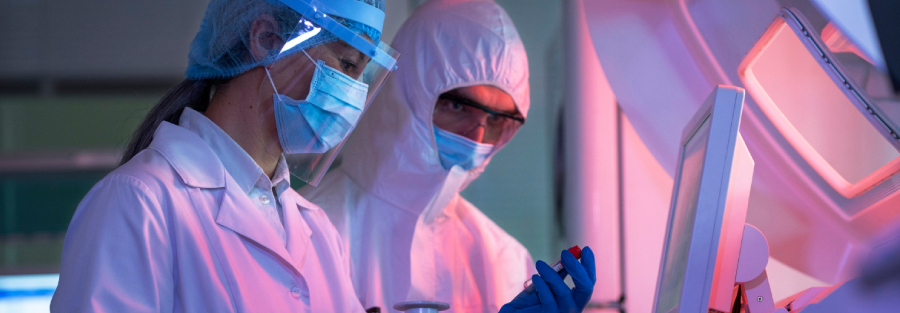
Drug Formulation
Research Methods of Drug Impurities
Drug impurities are unintended chemicals that remain with the active pharmaceutical ingredients (APIs) or develop during the formulation of pharmaceutical products. These impurities, if not properly identified and controlled, can compromise drug safety, efficacy, and shelf-life. As part of the api development process, identifying and quantifying these impurities is essential to ensure drug quality and regulatory compliance.
The study and analysis of drug impurities have become increasingly important due to stricter international standards and the potential impact on patient health. Effective research methods help in detecting these impurities, determining their origins, and developing strategies for their elimination or minimization.
Types of Drug Impurities
Drug impurities are generally classified into the following categories:
1. Organic Impurities
These arise during the synthesis of the drug substance or intermediates. Examples include:
- Starting materials
- By-products
- Intermediates
- Degradation products
2. Inorganic Impurities
These include:
- Reagents
- Ligands
- Heavy metals
- Other inorganic salts
3. Residual Solvents
Used in synthesis or purification steps, solvents may remain in small amounts. Their toxicological potential makes them critical to monitor.
4. Degradation Products
These impurities result from the breakdown of the drug substance over time or under specific conditions (heat, light, moisture, etc.).
Understanding these categories is crucial for designing the right strategy to detect and mitigate drug impurities
Sources of Impurities
Drug impurities can originate from a variety of sources throughout the drug lifecycle:
- Raw materials: Impurities can be introduced through contaminated or impure starting materials.
- Synthesis and reactions: Side reactions, incomplete reactions, or contaminated reagents can lead to the presence of impurities.
- Manufacturing equipment: Cross-contamination or improper cleaning can introduce unwanted substances.
- Packaging materials: Interactions with container-closure systems can result in leachables.
- Storage conditions: Temperature, humidity, and light exposure may degrade the drug product, forming new impurities.
Recognizing these sources is key to developing control strategies for maintaining product purity.
Analytical Methods for Detection
The identification and quantification of drug impurities rely on advanced analytical techniques. These include:
- High Performance Liquid Chromatography (HPLC): Separates and quantifies organic impurities with high sensitivity.
- Gas Chromatography (GC): Detects volatile impurities like residual solvents.
- Liquid Chromatography-Mass Spectrometry (LC-MS): Offers powerful separation and identification of trace-level impurities.
- UV-Vis Spectroscopy: Common for detecting chromophoric impurities in drug solutions.
- Fourier Transform Infrared Spectroscopy (FTIR): Useful for identifying functional groups in unknown impurities.
- Nuclear Magnetic Resonance (NMR): Helps elucidate the structure of complex impurities.
- Inductively Coupled Plasma Mass Spectrometry (ICP-MS): Detects and quantifies heavy metal impurities.
Selecting the appropriate method or a combination of methods is essential for a comprehensive impurity profile.
Regulatory Guidelines
Global regulatory agencies such as the ICH, FDA, and EMA have defined stringent guidelines for controlling drug impurities:
- ICH Q3A (R2): Pertains to impurities in new drug substances
- ICH Q3B (R2): Addresses impurities in new drug products
- ICH Q3C (R8): Sets acceptable limits for residual solvents
- ICH M7 (R1): Focuses on mutagenic and genotoxic impurities
These guidelines dictate the qualification thresholds, reporting limits, and safety evaluations that must be adhered to during the API development process.
Understanding these regulatory expectations is essential for designing and executing impurity testing strategies that ensure compliance and minimize regulatory risk.
Importance of Continuous Monitoring
The presence of drug impurities is not static. It can vary based on scale-up processes, vendor changes, or environmental conditions. Hence, continuous monitoring is vital at every stage, including:
- R&D and formulation development
- Scale-up and process validation
- Routine batch production
- Stability studies and shelf-life evaluation
Automated analytical systems and real-time data collection can help in rapid impurity detection and quality control.
Continual reassessment of impurity profiles not only improves drug safety but also provides key insights into process optimization, reducing the likelihood of costly product recalls or regulatory delays.
Conclusion
The accurate detection and control of drug impurities are fundamental to pharmaceutical safety and compliance. With advancements in analytical technologies and clear regulatory frameworks, manufacturers have robust tools to manage impurities effectively.
From identifying their origin to selecting the right testing method, every step plays a crucial role in ensuring that the final product meets stringent quality standards. Incorporating thorough impurity research into the api development process enhances not only compliance but also product reliability, ultimately protecting patient health.






